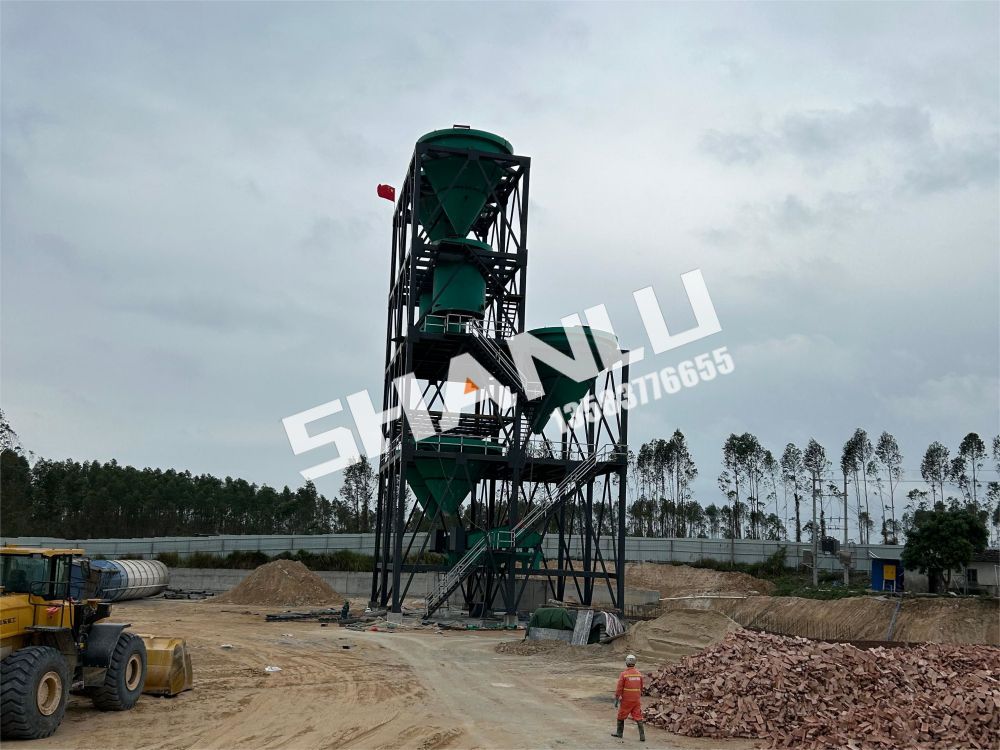Improving the production efficiency of quartz sand production line is a
comprehensive task, which needs to be improved and optimized from many aspects.
Here are some detailed methods and strategies:

1. Process optimization: Conduct a comprehensive analysis of the process flow
of the production line to find out possible bottlenecks and unnecessary links.
Through fine management, optimize the process, simplify the operation steps,
reduce the residence time of materials in the production process, so as to
improve production efficiency. For example, the overall efficiency of the
production line can be improved by rearranging the layout of the equipment,
optimizing the sequence of raw material processing, shortening the production
cycle.
2. Equipment update and upgrade: update outdated equipment, and introduce
advanced production equipment and technology. The new generation of production
equipment usually has higher production speed and lower energy consumption,
which can greatly improve production efficiency. At the same time, the
application of intelligent equipment and automatic control systems can also
reduce human intervention and improve the stability and production efficiency of
the production line.
3. Personnel training and skill upgrading: Strengthen the training and skill
upgrading of operators. Ensure that they are proficient in operating techniques
and equipment use to improve operational accuracy and efficiency. The training
content can include equipment operation skills, troubleshooting methods, safe
operation procedures, etc., in order to improve the overall quality and work
efficiency of the operator.
4. Regular equipment maintenance: Establish a sound equipment maintenance
system, and regularly inspect, maintain and repair production equipment.
Identify and solve potential problems in a timely manner, reduce equipment
failures and downtime, and ensure the continuous and stable operation of the
production line. At the same time, arrange equipment maintenance plan reasonably
to avoid production line shutdown caused by equipment failure and improve
production efficiency.
5. Production planning and scheduling: Make reasonable production plans, and
make flexible adjustments according to market demand and raw material supply.
Through reasonable production planning and scheduling, the production line can
avoid the idle or overloaded state due to unreasonable production planning, and
improve the utilization rate and production efficiency of the production
line.
6. Save energy consumption: Use energy-saving equipment and technology to
optimize energy utilization structure and reduce energy consumption. For
example, by optimizing equipment operating parameters and improving production
processes, energy waste is reduced, production costs are reduced, and production
efficiency is improved.
7. Quality control: Strengthen quality management and establish a strict
quality management system to ensure that product quality meets standard
requirements. By strengthening raw material testing, process control and product
inspection and other links, reduce the rate of defective products, reduce
repeated processing, improve the product pass rate, reduce production costs, and
improve production efficiency.
8. Information management: Establish an information management system to
achieve real-time monitoring, analysis and feedback of production data. Through
the timely analysis of production data, the problems and bottlenecks of the
production line are found, and corresponding measures are taken to adjust and
optimize, improve production efficiency and decision-making accuracy.
9. Improve the working environment: provide good working environment and
working conditions for employees, pay attention to the comfort and safety of
employees. Establish a sound safety management system, improve employees' safety
awareness and responsibility awareness, reduce work
Injury accidents occur, improve employee enthusiasm and productivity.
10. Continuous improvement: Continuously optimize and improve the production
line, introduce new technologies and new processes, and adjust the production
strategy according to the actual situation. Through continuous improvement and
optimization, improve the efficiency and competitiveness of the production line,
adapt to changes in market demand, and maintain continuous and stable
development.